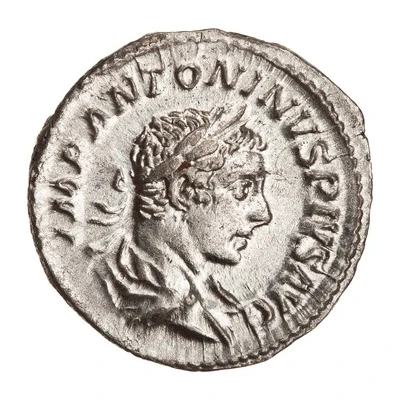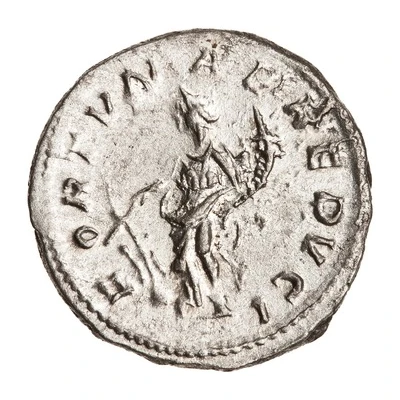


© American Numismatic Society (ANS)
Denarius - Elagabalus FORTVNAE REDVCI; Fortuna
| Silver | 2.8 g | 19 mm |
| Issuer | Rome › Roman Empire (27 BC - 395 AD) |
|---|---|
| Emperor | Elagabalus (Sextus Varius Avitus Basianus) (218-222) |
| Type | Standard circulation coin |
| Years | 218-222 |
| Value | Denarius (½) |
| Currency | Antoninianus, Reform of Caracalla (AD 215 – 301) |
| Composition | Silver |
| Weight | 2.8 g |
| Diameter | 19 mm |
| Shape | Round (irregular) |
| Technique | Hammered |
| Orientation | Variable alignment ↺ |
| Demonetized | Yes |
| Updated | 2024-10-05 |
| Numista | N#276693 |
|---|---|
| Rarity index | 94% |
Reverse
Fortuna, draped, standing left, holding rudder set on globe in right hand and cornucopiae in left hand.
Script: Latin
Lettering: FORTVNAE REDVCI
Translation:
Fortunae Reduci.
Returning fortune.
Comment
Mass varies: 2.1–3.337 g;Diameter varies: 17.6–21 mm;
Example of this type:
American Numismatic Society (ANS)
Source:
Online Coins of the Roman Empire (OCRE)
Interesting fact
One interesting fact about this coin is that it features an image of Fortuna, the Roman goddess of luck and prosperity, on one side, while the other side bears the image of Emperor Elagabalus. This coin was minted during a time of significant political and social upheaval in the Roman Empire, and the image of Fortuna may have been intended to convey a sense of stability and continuity in the face of uncertainty. Additionally, the fact that the coin was made of silver, a valuable and durable metal, may have been seen as a symbol of the empire's wealth and power.